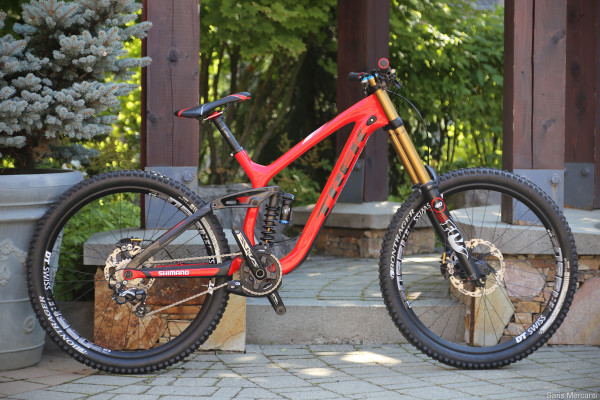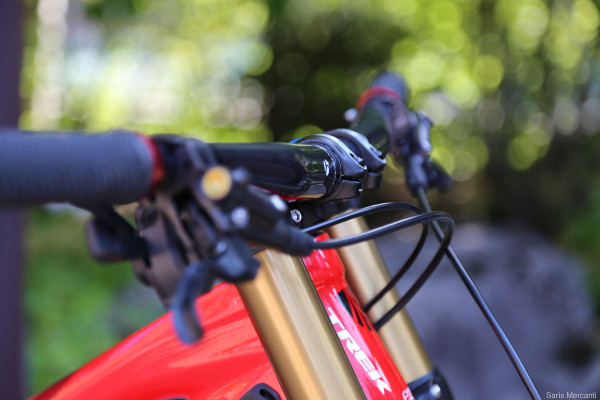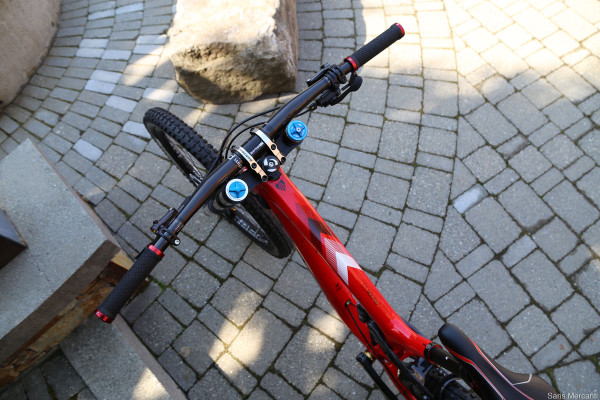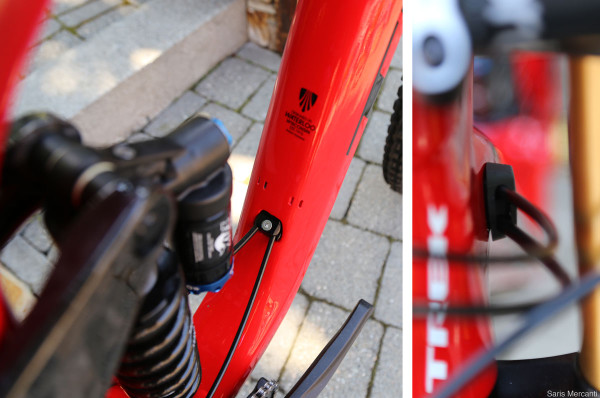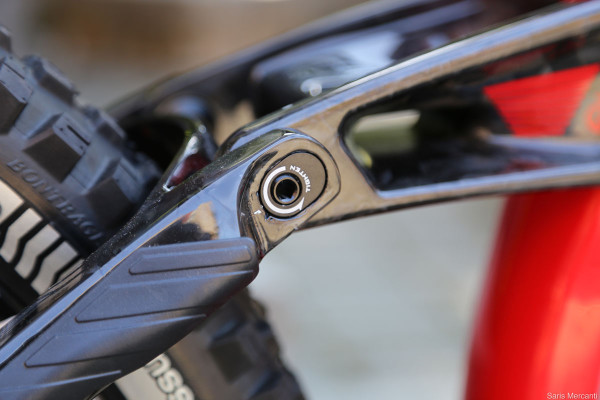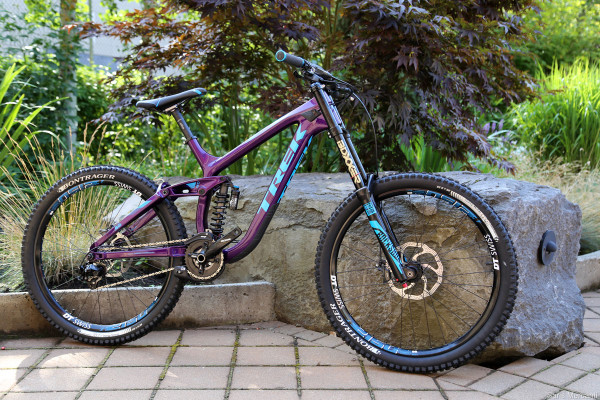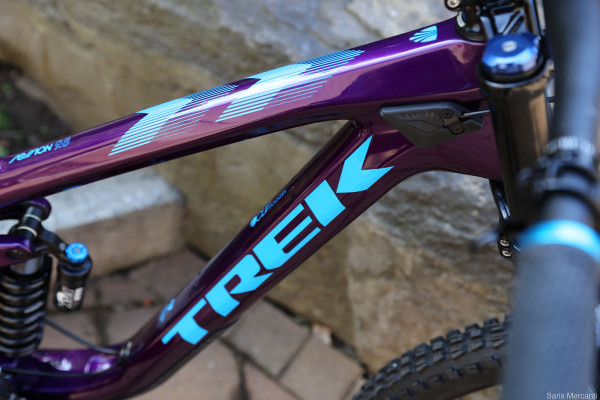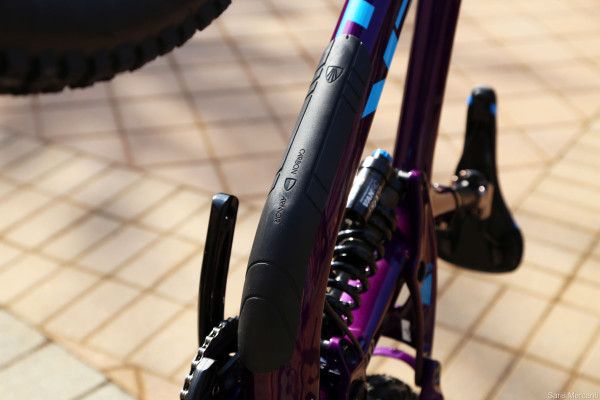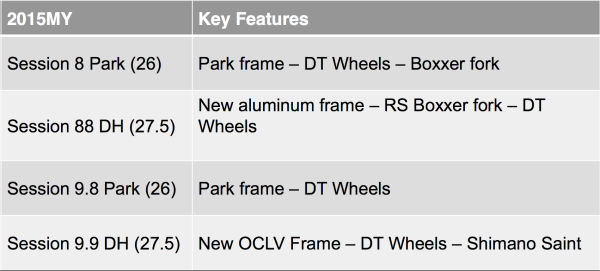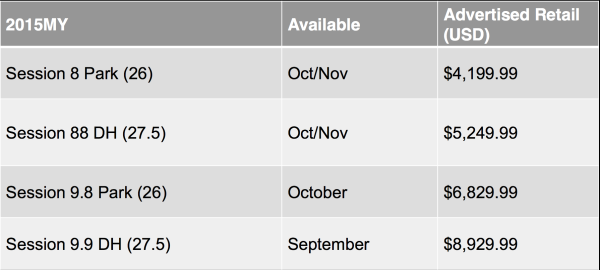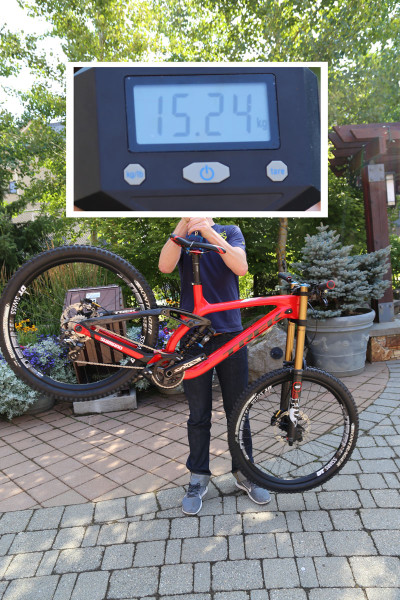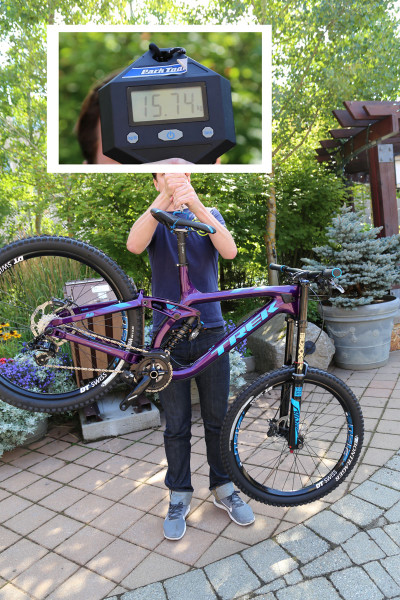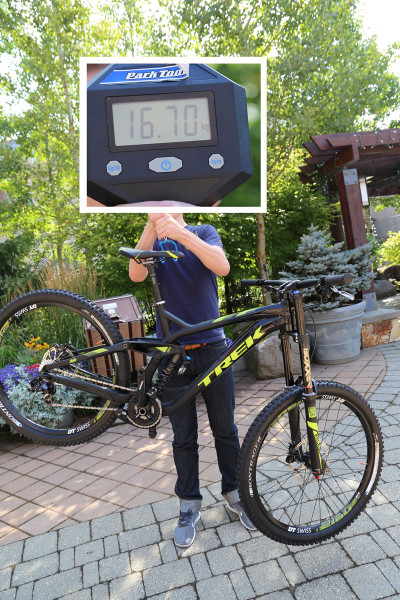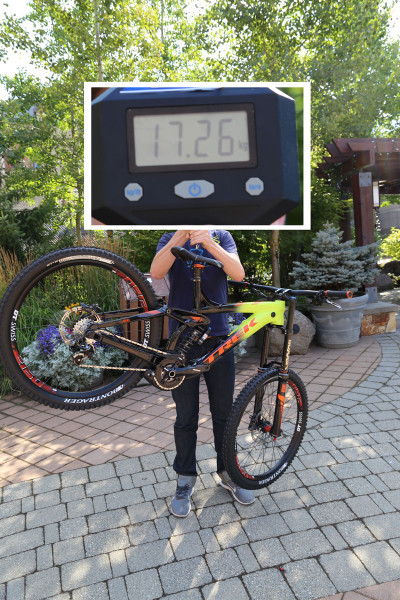It’s hard to explain to outsiders the subtle but important difference between the stack of bikes that often clutter a cyclists garage, but even subtle differences in geometry can affect performance. And at the highest level of the sport, those differences are amplified.
For the downhill crowd, that narrow but almost imperceptible divide in bikes is between racing and big mountain or slope style riding. Both categories require a bike that may visually look similar, but they are two separate and distinct riding styles. Working with their stacked team of racers and slopestyle athletes, Trek has introduced two new iterations of their Session DH bike to help meet both groups needs.
The worlds fastest riders require a platform that’s stable at speed, capable of being pedaled through rough terrain, and maximizes traction. For that application, Trek has fitted 27.5″ wheels, more travel, and a longer rear end to the Session DH.
To partially compensate for the added height of the front end due to the larger wheels, Trek has created their own line of direct mount stems with a drop. Combined with a shorter head tube, the bar height of the race bike is not too dissimilar from that of the Park version.
Some racers prefer to externally route their cables to make swapping in new components easier, while others prefer the clean look of internal routing. Regardless of preference, the Session is more than accommodating.
Like the majority of other full suspension bikes in the Trek line up, the Session has a Mino Link, which allows riders to tweak the frames geometry with a simple adjustment.
While riders like Brook Macdonald and up and coming US rider Neko Mulally have been smashing World Cups on the Session DH, slope style giants like Brandon Semenuk and Cam McCaul have very different needs for events like Rampage.
Designed for bigger hits, the bike has 190mm of travel rather than 210mm, and is more progressive. The stays are also much shorter, 420mm versus 445mm. This is partially due to wheel size. Unlike its more racing oriented sibling, the Session Park has 26″ wheels, which are easier to trick, and parts are currently more readily available and cheaper.
Both bikes will be equipped with downtube protecters.
For 2015, Trek will sell four different Session builds – one alloy and one carbon – for both the Park and DH versions.
Completes will start arriving at dealers starting next month.
The top of the line Session DH 9.9 weights 15.24 kg (33.59lb) stock. Although it would be pretty easy to save almost a pound by swapping in a Ti Coil and installing carbon RF Sixc Cranks.
The carbon Session 9.8 Park bike retails for $6,829, $2,000 less than the premium race bike. Due to the smaller wheels, weight is a relatively low 15.74 kg (34.7 lb).
The $5,240 aluminum Session 88 DH weighs 16.70 kg (36.8 lb).
The aluminum Trek Session Park costs $4199.99 and weighs 17.26 kg (38 lb).
Learn more at Trek
